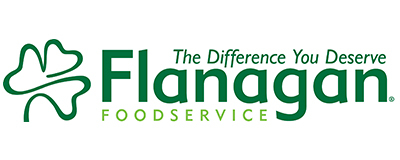
We collect basic website visitor information on this website and store it in cookies. We also utilize Google Analytics to track page view information to assist us in improving our website.
Summer 2006
Our Kitchener head office will see a significant expansion this year, with groundbreaking during the first week of September.
But that's not all: Rick Flanagan says the addition is a groundbreaking development in Canada, the first-ever such facility in the country.
The 65,000 square foot addition will add about 50% more to the current, 136,000 square foot Flanagan facility on Sasaga Drive in Kitchener. And almost all of the new space - 50,000 square feet - will be a state-of-the-art freezer section using technology developed and implemented in Japan, but never before built in Canada.
Rick Flanagan says the reasons for expansion are simple - even if the project itself is anything but. The need to grow is "driven by sales," he says, adding, "so much more of our business has been steering toward frozen foods."
Currently, Flanagan's Kitchener facility has about 25,000 square feet of freezer space. The new plant will double that, and the existing space will be converted to dry storage.
In all, the 65,000 square foot addition will include 45,000 square feet of regular freezer space, and a 5,000 square foot ice cream freezer, as well as 10,000 square feet of cool dock, and a 5,000 square foot cooler.
Even though the Kitchener facility underwent a significant expansion in 2002, Flanagan says "we've been at capacity for a number of years. To continue to grow our business we need additional warehouse space."
The 2002 expansion was quickly occupied, he says, because "we picked up a couple of large customers at that time."
A repeat performance would be more than welcome, but there are no specific new large customers driving the new expansion. Instead, the company sees the need for more space, and plans to rent out any immediately unused freezer space to corporate clients. That will produce a revenue stream but, more importantly, it will mean a full freezer - and as Flanagan notes, the least efficient, most expensive thing to have in a functioning freezer is air.
The new addition will be sited on property adjacent to the Flanagan property, which the company purchased many years ago, anticipating the eventual need for growth.
"It's exciting"
The sheer scope of the addition is impressive, but Rick Flanagan finds the innovative technology involved in the new freezer very "exciting." The freezer technology has been developed by a Japanese company; its Canadian arm is Mycom Canada. The building will be constructed by Collaborative Structures Ltd. (CSL), a Cambridge company with an impressive, award-winning record and significant experience in environmentally innovative building projects. In fact, CSL's own head office is an award-winning LEED building.
Flanagan describes the science behind the refrigeration system as "huge technology." Typically, refrigeration operates as a freon-based system, which is neither ozone-friendly nor efficient. An alternative is ammonia, but ammonia should not enter an occupied building. The new Flanagan's freezers use ammonia, "in a self-contained unit in two very large insulated compressors", to cool CO2 - "The CO2 enters the building," says Rick Flanagan, making for a safe, environmentally friendly and efficient system.
"This is really interesting," he says. "It has not been used for food warehousing before in Canada, but it has been in Japan."
"Ideally," says Flanagan, "the new ammonia system will help us save money... although there is a longer payback, around six and a half years."
There are innovations involved in the project, as well. "We're putting some environmentally friendly technology into the building," says Flanagan. For example, it is necessary to heat under a freezer floor to control frost - this building will use the "heat off the compressors to heat under the floor."
The building will also have a system to collect rainwater, which will be used for washing trucks, and defrosting freezers.
Flanagan also notes that "we've found a very reflective roof membrane to significantly reduce absorption of the heat of the sun."
Ready to go early in 2009
The new unit will be set up by mid-December, and the move will take place during the somewhat quieter month of January.
Flanagan says the expansion has been in the development stages for a year, and there is now some urgency, since the company is at capacity, and they hope for construction to be completed before winter.
Asked if the huge expansion will mean an increase in staff, Flanagan smiles. "If my salespeople bring me additional sales," he says. "The idea is to increase sales now that we have additional capacity."
He is quietly hoping for the same kind of growth that took place, after the 2002 expansion. "I would expect this addition would last us five to ten years," he says, "but I'd love to be pleasantly surprised."
Flanagan does not expect the new addition to have a major impact on other Flanagan facilities throughout the province, although he notes that, if the Owen Sound facility was pressed for capacity, the expanded Kitchener plant would be able to provide additional support.
The biggest impact, though - and this is a consistent theme through Flanagan Foodservice history - is that the company will be able to provide even better service to it growing list of clients. And that's the most exciting facet of the expansion for Rick Flanagan and all of his Flanagan's colleagues.